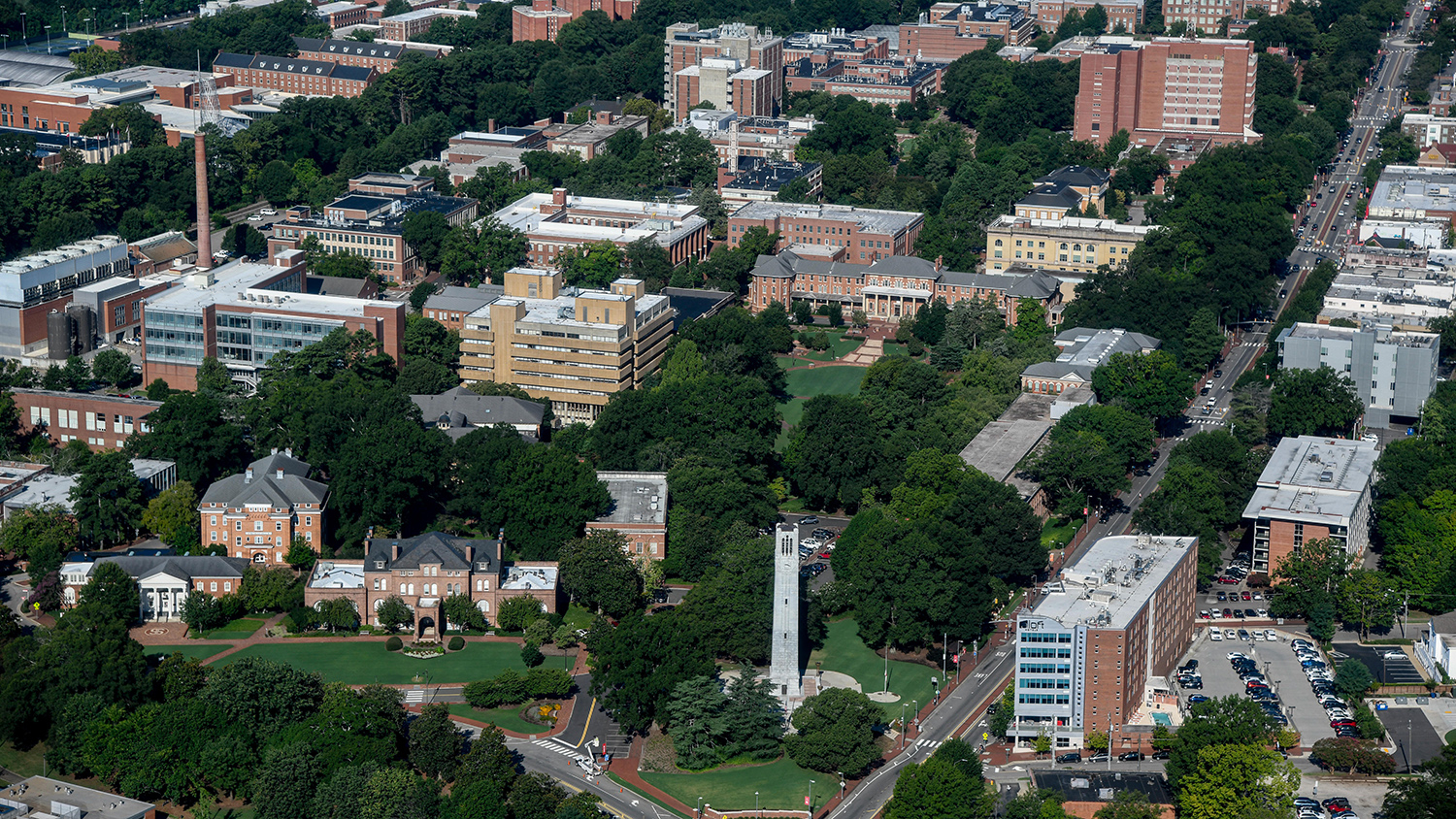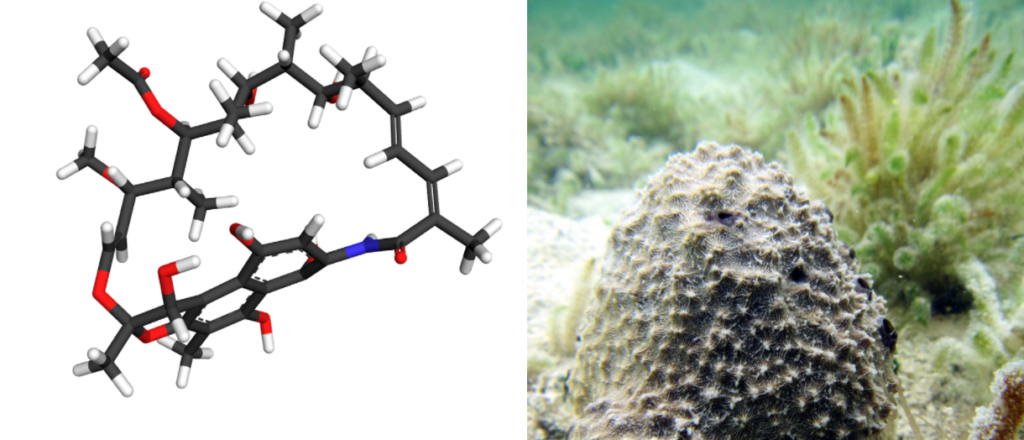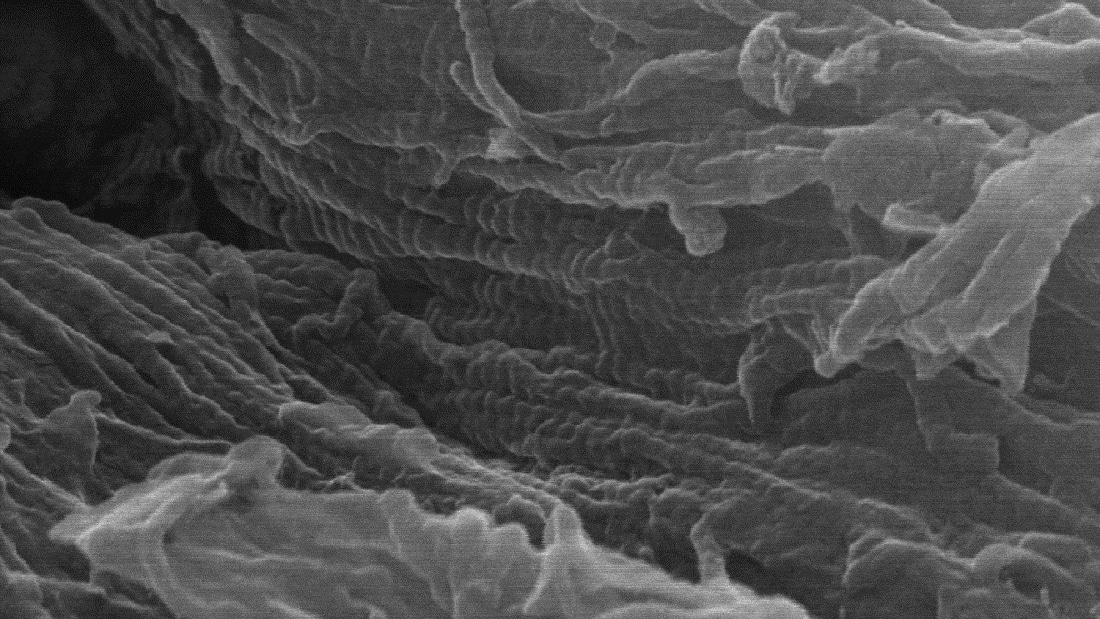Engaging in Integrative Sciences

NC State seeks to raise the bar for interdisciplinarity in higher education, both through its new Office of University Interdisciplinary Programs and the Integrative Sciences Initiative and Building. The Integrative Sciences Initiative and Building (ISI and ISB) will change the way NC State does science by facilitating new synergies in research, education and application.
The ISI will be led by Joshua Pierce, co-director of NC State’s Comparative Medicine Institute, in collaboration with ISI theme leaders Melanie Simpson and Yevgeny Brudno. Rob Dunn, interim senior vice provost for University Interdisciplinary Programs, and Duane Larick, senior vice provost and professor emeritus, will provide direction in launching the initiative and strategizing to bring together scholars and students from biochemistry, biological sciences, chemistry, engineering, biomedical sciences and microbiology in one place.
“Whenever and wherever we can support and strengthen interdisciplinary education at NC State, we will do so,” said Executive Vice Chancellor and Provost Warwick Arden. “With Duane lending his depth of experience in this arena to Rob and Josh’s leadership capabilities, I am confident that the Integrative Sciences Initiative and Building will place NC State at the forefront of interdisciplinarity and changing the culture of scientific discovery as we conceptualize new modes of research and learning.”
A Solid Foundation for Success
Excellence in interdisciplinarity and STEM have a rich background at NC State, with several strategic programs serving as forerunners to the ISI and ISB. Pierce helped develop NC State’s Chemistry of Life program, launched within the university’s Comparative Medicine Institute in July 2020. The CLP is a research, training and education program designed to break down barriers between colleges and departments across campus invested in molecular science, which the ISI and ISB wholeheartedly embrace.
NC State has a long history of supporting centers and institutes that promote and engage in interdisciplinary research across boundaries. Some have been created with a broad vision from the beginning, like the Comparative Medicine Institute, established in 2006 as the Center for Comparative Medicine and Translational Research. Others have a more narrow focus, but participate in cross-disciplinary research opportunities, with both types lending to the development of the university’s current interdisciplinary culture.
In 2012, the university launched the Chancellor’s Faculty Excellence Program, bringing world-class faculty in diverse disciplines to the university. More than 70 faculty participate in the cluster program, and show what’s possible for the ISI and ISB in further fruitful collaboration across disciplinary lines.
“NC State has a track record in the development of diverse teams to tackle interdisciplinary problems,” said Pierce. “We are primed to leverage these learned experiences to unite faculty and students studying the molecular sciences in the Integrative Sciences Building and are uniquely suited to do so.”
Thematic Areas
To turn scientific grand challenges into opportunities for advancement in these disciplines, three initial research thematic areas have been identified to collaboratively study, synthesize and screen molecules and molecular pathways in the context of infectious disease and cancer. These Chemistry of Life themes — providing the backbone of research efforts pursued through the ISI — are molecular mechanisms of metabolism and disease, molecular synthesis and characterization, and molecular therapeutics and drug discovery.
Melanie Simpson, professor and head of the Department of Molecular and Structural Biochemistry, will lead the molecular mechanisms of metabolism and disease thematic area; Pierce will lead molecular synthesis and characterization; and Yevgeny Brudno, assistant professor in the Joint Department of Biomedical Engineering, will lead molecular therapeutics and drug discovery. Each thematic area underscores the importance of molecular science at the interface of the life sciences, which lie at the heart of how faculty think and do in STEM at NC State.
“Throughout our process we’ve kept faculty enrichment, along with student success, at the forefront,” said Larick. “NC State is the UNC System’s flagship research institution for STEM, and we graduate one-third of all STEM students within the system. We’re building this initiative to better serve faculty and students in their research, teaching and learning, and to solidify NC State’s position among the world’s elite research universities in basic and applied molecular sciences.”
A fourth theme focuses on inquiry-based education and workforce development; students will learn broad concepts and industry-relevant techniques while participating in curiosity-driven, discovery-based science. Theme leaders are: Jeremiah Feducia, teaching associate professor in the Department of Chemistry; Carlos Goller, associate teaching professor in the Department of Biological Sciences and the Biotechnology program (BIT); Trino Ascencio-Ibanez, teaching associate professor in the Department of Molecular and Structural Biochemistry; and Jane Lubischer, associate department head in the Department of Biological Sciences. These leaders are working to ensure that NC State students graduate having already had extensive experience in research that involves a mix of cutting-edge techniques and collaborative research projects that span disciplines all in the context of the real-world challenges of society.
Imagine The Possibilities
The ISI will connect existing strengths on NC State’s campus and enable research that would not otherwise be possible. For example, microbiologists working with ecologists might identify bacteria in marine sponges producing never-before-seen molecules. Chemists, geneticists, synthetic biologists and engineers can then combine their expertise to provide access to the novel molecule, and engage biologists and biomedical experts on uses for the molecule, including potential infectious disease or cancer treatment. Teams of scientists, including student-scientists, working in the ISB will make, study and ultimately develop novel molecules to address some of humanity’s biggest environmental and health threats. This scenario is enabled by the ISB, but just scratches the surface of the interdisciplinary opportunities.
“The above scenario relies on expertise from diverse fields–from field biology to molecular synthesis to molecular metabolism and even therapeutic development to advance,” said Dunn. “It is the kind of work that isn’t possible when scientists are working in the relative isolation of departments. The ISB and broader ISI provide a platform for truly immersive interdisciplinary study and a team science approach to problem solving.”

Meanwhile, as part of the ISI (and in collaboration with the NC State University Libraries), annual working groups will bring together scholars from across campus and also around the world to synthesize existing knowledge in key focal topics. A group working in relation to marine sponge bacteria would include chemists, biochemists, synthetic biologists, engineers and biomedical experts, as well as anthropologists, geographers, and historians to identify key microbes that have been used around the world historically in ways that value their own enzymes or molecules they produce. Potentially, this working group could lead to a series of high-profile papers that through synthesis change our understanding of the world around us, but also new molecule leads that can be followed up on through the ISI. This highlights just one example of how the research cores in the ISI provide interdisciplinary collaborative opportunities across NC State and beyond.
New leads that emerge from synthesis will then inform instruction in new integrative science classes in chemistry, biochemistry, biology, biotechnology and other disciplines that connect to and build upon each other. Through these classes, students learn about an applied problem–such as the need for new anticancer molecules– and then, through hands-on learning, proceed to tackle that problem from a variety of different disciplines. Guided by insights from the working groups, the students embark on discovery-based science with a high probability not only of new insights but also of new intellectual property. As they do so, students learn new techniques with direct application to real-world jobs in a range of fields. This is how NC State changes science research and education, for the benefit of faculty and students, but also society at large.
Meanwhile, parts of the first floor of the ISB will serve as a place through which the ISI can engage the public in student and faculty research and discoveries about the chemistry of the living world. The building will engage the community through indoor and outdoor exhibits, events, and connections with other nearby buildings and their initiatives, especially D.H. Hill Library, right across the Brickyard from ISB.
What’s Next
Design development for the ISB is expected to be completed by June, with construction slated for completion in spring 2026. Where the demolition of Harrelson Hall left a void in the heart of campus, the ISB seeks to bring a well-rounded, highly innovative space for STEM disciplines. Upon completion, the $160 million new facility will provide 153,000 square feet of crucial teaching and research space, and provide a catalyst for transforming the sciences at NC State.
In the meantime, ISI leaders will seek to engage the campus community through a survey and listening sessions to gather input on the biggest technological challenges and barriers to next-generation molecular science research and teaching. The survey will also seek feedback on various challenges and opportunities for the Integrative Sciences Initiative and Building as they gain momentum and make progress toward NC State’s strategic goals.
With a strong start provided by experienced leadership with a vision for interdisciplinary excellence, along with outstanding education, training and research enterprises, NC State moves further toward cementing its position as a world leader in the molecular and life sciences with the ISI and ISB.
This post was originally published in Provost's Office News.


